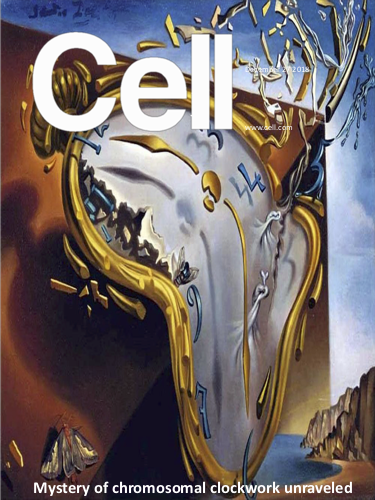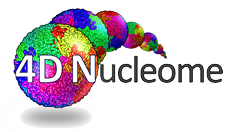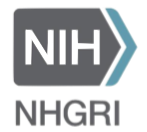David M. Gilbert
Our goal is to understand how mammalian chromosomes are organized within the nucleus to carry out their functions. DNA replication provides an excellent forum in which to study chromosome structure and function. Structural and functional units of chromosomes replicate coordinately, often through the synchronous firing of clusters of replication origins that encompass domains of approximately 0.5 Mb. Each of these replication domains is programmed to replicate at a specific time during S-phase. In general, transcriptionally active (euchromatin) domains replicate early in S-phase, and transcriptionally silent (heterochromatin) domains replicate late. Programmed changes in replication timing accompany key stages of animal development and are often coupled to changes in gene expression. Our working hypothesis is that structural, functional, and replication domains share topographical boundaries and represent basic units of chromosome organization. We would like to understand what regulates where and when replication begins, how developmental cues communicate with the cell-cycle machinery to elicit changes in the program for replication and how that program is disrupted in cancer. Read more
Recent Publication:
Genome-wide mapping of human DNA replication by optical replication mapping supports model of eukaryotic replication.

The heterogeneous nature of eukaryotic replication kinetics and the low efficiency of individual initiation sites make mapping the location and timing of replication inititaion in human cells dicciult. To address this challenge, we have developed optical replication mapping (ORM), a high-throughput single-molecule approach, and used it to map early-initiation events in human cells. The single-molecule nature of our data and a total of >2,500- fold coverage of the human genome on 27 million fibers averaging ~300 kb in length allow us to identify initiation sites and their firing probability with high confidence. We find that the distribution of human replication initiation is consistent with inefficient, stochastic activation of heterogeneously distributed potential initiation complexes enriched in accessible chromatin. These observations are consistent with stochastic models of initiation-timing regulation and suggest that stochastic regulation of replication kinetics is a fundamental feature of eukaryotic replication, conserved from yeast to humans.


.jpg)



